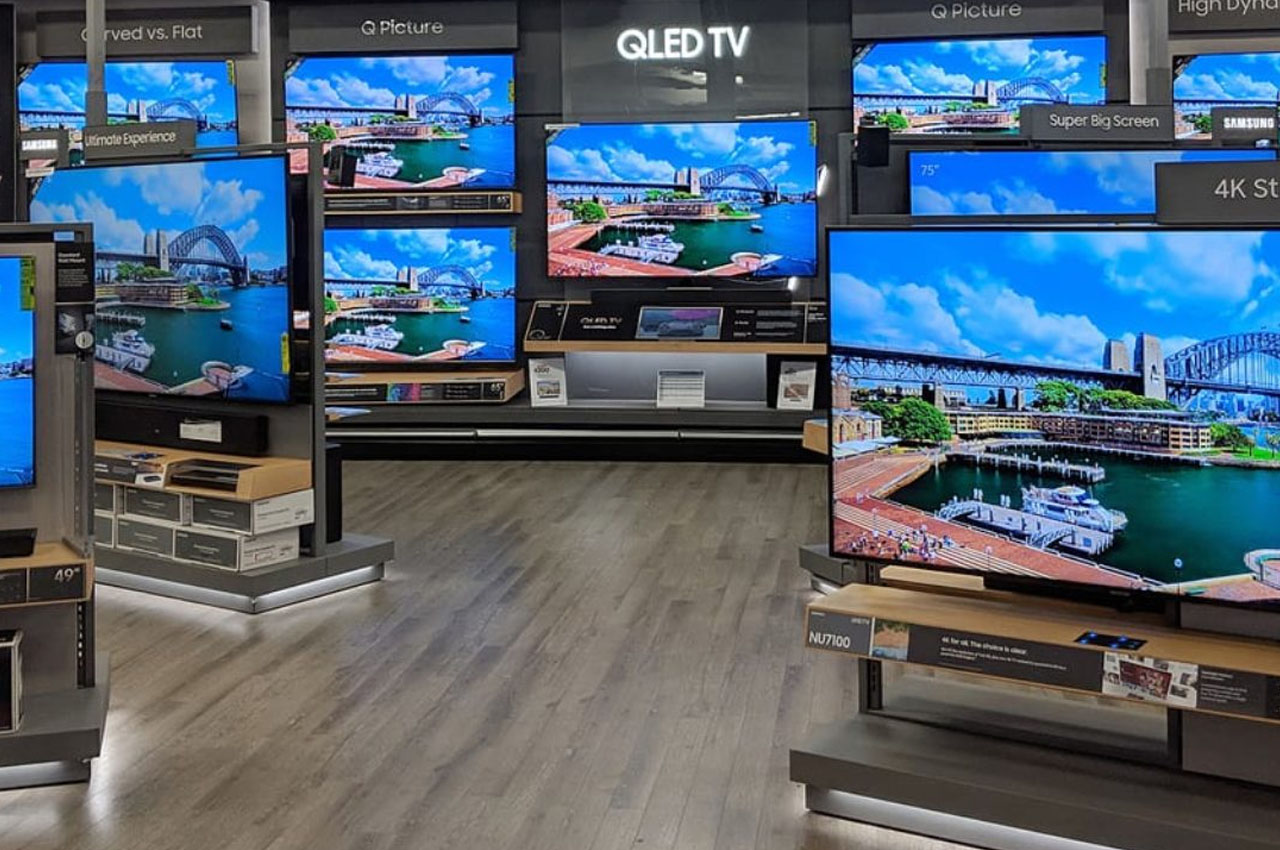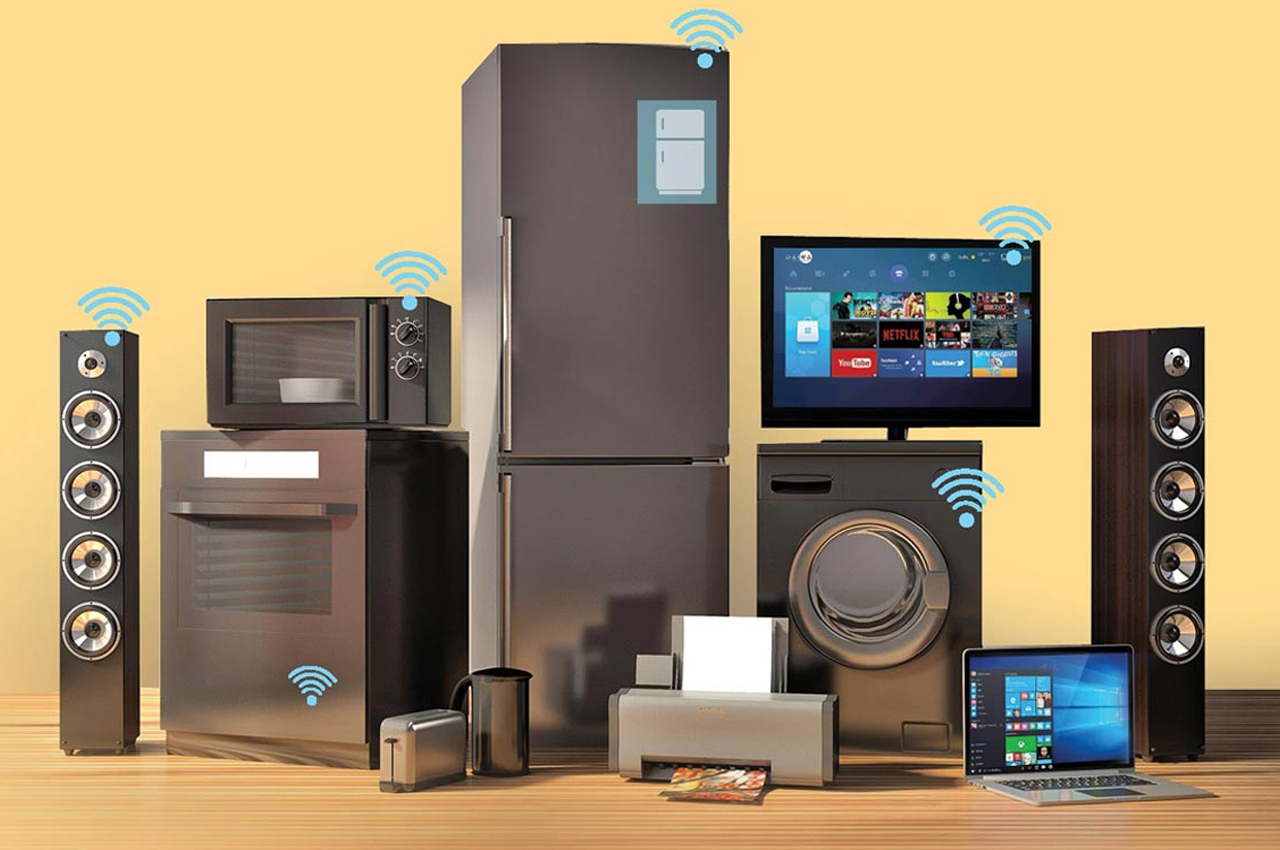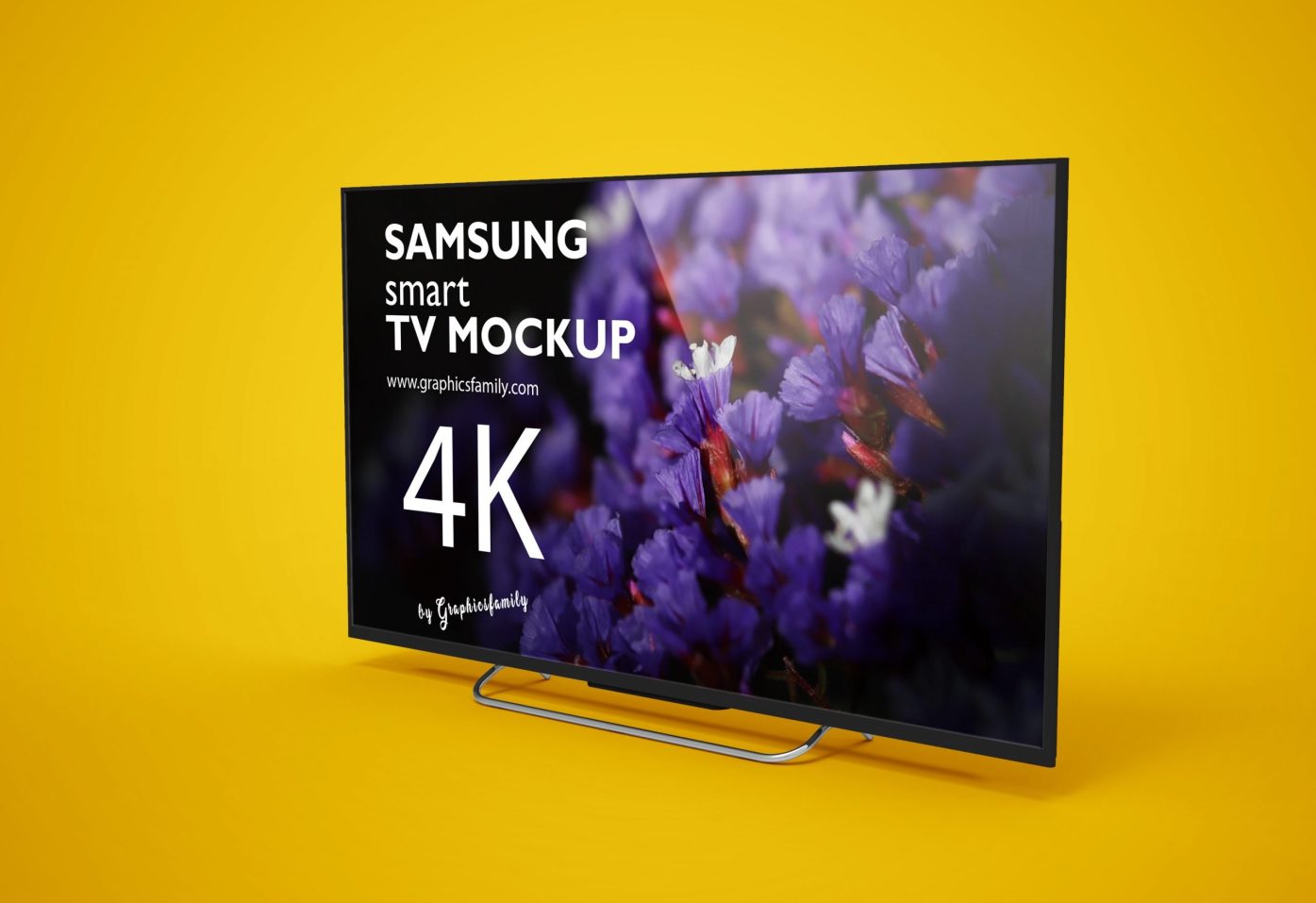Author: aeuser
Top 5 Must-Have Gadgets to Upgrade Your Home in 2025
Introduction
Technology is evolving faster than ever, and 2025 has brought us some truly amazing innovations that can make your home smarter, safer, and more efficient. Whether you’re looking to simplify daily chores or elevate your entertainment experience, these top 5 electronic gadgets are must-haves for every modern home.
1. Smart Home Assistants
Voice-controlled assistants like Amazon Echo and Google Nest Hub continue to dominate the market. This year’s models feature improved AI capabilities, allowing them to control even more devices — from lights and thermostats to your home security system — all through simple voice commands.
Pro Tip: Pair your assistant with smart plugs and bulbs to automate your entire living space.
2. 8K Smart TVs
Upgrade your entertainment setup with the latest 8K Ultra HD Smart TVs. With deeper contrast, vivid colors, and enhanced AI upscaling, they deliver a truly cinematic experience. Brands like Samsung, LG, and Sony have launched new models with slimmer bezels and integrated voice controls.
3. Wireless Noise-Cancelling Headphones
Work, travel, or relax without distractions. The new generation of noise-cancelling headphones features adaptive sound modes, longer battery life, and ergonomic designs. Perfect for both professionals and music lovers.
4. Smart Security Cameras
Keep your home safe 24/7 with AI-powered security cameras that detect motion, recognize faces, and send instant alerts to your phone. Models from Eufy, Arlo, and Ring now offer cloud storage and night vision for complete peace of mind.
5. Portable Power Stations
For outdoor enthusiasts or during power outages, portable power stations have become essential. These compact yet powerful devices can charge phones, laptops, and even small appliances, making them ideal for camping or emergency backup.
Final Thoughts
The future of electronics is about connectivity, convenience, and sustainability. Whether you’re upgrading your home or gifting a gadget lover, these products represent the best in smart living technology for 2025
The Digital Revolution: Transforming the World in 2025
The world is undergoing a profound transformation fueled by digital technologies. The Digital Revolution, often referred to as the Fourth Industrial Revolution, is reshaping how we live, work, and interact. From artificial intelligence to blockchain, the pace of innovation is accelerating, and 2025 is proving to be a landmark year in this ongoing transformation.
💡 What is the Digital Revolution?
The Digital Revolution marks the shift from traditional, analog processes to digital technologies. Unlike previous industrial revolutions, which were driven by steam, electricity, or electronics, the current revolution is defined by data, connectivity, and intelligent systems. It is the backbone of modern society, impacting every industry—from healthcare and education to finance and entertainment.
🌍 Key Drivers of the Digital Revolution in 2025
1. Artificial Intelligence (AI)
AI is no longer a futuristic concept; it is a central part of our daily lives. From chatbots that enhance customer service to AI-powered diagnostics in healthcare, machines are learning to make intelligent decisions. In 2025, AI is driving automation across industries, boosting efficiency and productivity.
2. 5G and Connectivity
High-speed 5G networks are enabling faster data transfer, low-latency communication, and seamless connectivity. This revolutionizes sectors like autonomous vehicles, smart cities, and IoT devices, making real-time communication and monitoring a reality.
3. Internet of Things (IoT)
IoT connects everyday devices—from smart refrigerators to wearable fitness trackers—to the internet, creating a highly interconnected ecosystem. In 2025, the proliferation of IoT devices allows data-driven insights that improve convenience, efficiency, and decision-making.
4. Blockchain and Digital Security
Digital transactions and data storage are becoming increasingly secure through blockchain technology. It enhances transparency, reduces fraud, and enables secure financial transactions, making it a cornerstone of the digital economy.
5. Cloud Computing and Big Data
Cloud technologies and big data analytics allow businesses to store, process, and analyze massive amounts of information. In 2025, companies are leveraging cloud platforms to make informed decisions, optimize operations, and innovate faster.
🏭 Industries Transformed by Digital Technologies
- Healthcare: Telemedicine, AI diagnostics, and wearable monitoring devices are revolutionizing patient care.
- Education: Virtual classrooms, AI tutors, and online learning platforms make education more accessible.
- Finance: Fintech solutions, digital wallets, and blockchain technology are redefining banking.
- Retail: E-commerce platforms and AI-driven recommendations are reshaping shopping experiences.
- Manufacturing: Smart factories use IoT and automation to enhance production efficiency.
📈 The Impact on Businesses and Consumers
The digital revolution is not just technological—it’s economic and social. Businesses can now operate globally with minimal physical infrastructure, while consumers enjoy more personalized and efficient services. For instance:
- Personalized marketing through AI analytics
- Real-time supply chain management using IoT
- Smart home devices improving daily life
In 2025, companies that embrace digital transformation are likely to dominate their sectors, while laggards risk obsolescence.
🔮 Looking Ahead
The digital revolution is ongoing, and the next decade promises even more dramatic changes. Emerging technologies like quantum computing, extended reality (XR), and autonomous systems will further blur the line between the physical and digital worlds.
For individuals and businesses alike, staying adaptable, learning new digital skills, and leveraging emerging technologies will be essential to thrive in this digital-first era.
The Digital Revolution is more than technology—it is a cultural and economic shift that continues to redefine the way we live, work, and interact. In 2025, its influence is stronger than ever, and the journey is only just beginning.
Electronic Sales Growth in 2025: Trends, Drivers & Future Outlook
The electronics market in 2025 is experiencing a dynamic transformation, characterized by robust growth, technological advancements, and evolving consumer behaviors. From AI-powered devices to the resurgence of gaming consoles, the industry is witnessing significant shifts. Let’s delve into the key trends shaping the electronics sales landscape this year.
🔌 Global Electronics Market: A Snapshot
The global consumer electronics market is projected to reach $1.46 trillion in 2025, expanding at a 7.8% compound annual growth rate (CAGR) through 2032. This growth is driven by sustained demand for smart-home devices, gaming consoles, and health-tech gadgets Shopify.
🛒 E-Commerce Surge: Electronics Lead the Charge
Online retail continues to be a major growth driver for electronics sales. The global consumer electronics e-commerce market is expected to grow from $701.08 billion in 2024 to $819.32 billion in 2025, marking a 16.9% year-over-year increase. This surge is attributed to factors such as:
- Convenience of online shopping
- Competitive pricing
- Mobile shopping accessibility
Looking ahead, the market is projected to reach $1.56 trillion by 2029, fueled by advancements in AI, personalized shopping experiences, and the rise of omnichannel retail The Business Research Company.
🎮 Gaming Consoles: A Resurgence
The gaming sector is experiencing a significant uptick, with U.S. spending on game consoles reaching $312 million in August 2025, a 32% increase from August 2024. This growth is primarily driven by the release of the Nintendo Switch 2, which has become the fastest-selling console ever in the U.S., surpassing 2.4 million units in its first three months The Verge.
🏠 Smart Home Devices: The Upgrade Trend
Consumer interest in smart home appliances is on the rise, especially in regions like Lucknow, India. The recent GST revision, which lowered the tax rate on household appliances from 28% to 18%, has made products like air conditioners, dishwashers, refrigerators, and washing machines more affordable. Retailers report a growing trend of consumers upgrading to smarter, more efficient home setups The Times of India.
💻 AI-Powered Devices: The Future of Electronics
AI integration is becoming a cornerstone of modern electronics. Companies like Foxconn are reporting significant revenue increases, driven by soaring demand for AI-related products, particularly servers used with Nvidia’s AI chips. This trend highlights the growing importance of AI in shaping the future of consumer electronics The Times.
📱 Mobile Commerce: A Dominant Force
Mobile commerce (mCommerce) is set to account for $2.51 trillion in sales in 2025, marking a 21.25% increase from the previous year. This growth outpaces the average annual growth rate of 15.3% forecasted from 2018 to 2027, underscoring the increasing reliance on smartphones for online shopping Sellers Commerce.
💡 Key Takeaways
- E-commerce dominance: Online sales continue to drive growth in the electronics sector.
- AI integration: Artificial intelligence is enhancing product offerings and consumer experiences.
- Mobile-first shopping: Smartphones are becoming the primary devices for online purchases.
- Smart home adoption: Consumers are investing in intelligent home appliances for improved efficiency.
🔮 Looking Ahead
The electronics market in 2025 is poised for continued growth, driven by technological innovations, changing consumer preferences, and the expanding role of e-commerce. Companies that leverage AI, offer seamless mobile shopping experiences, and cater to the demand for smart home devices will likely lead the market in the coming years.
The Television Revolution: How Smart TVs Are Changing the Way We Watch in 2025
Gone are the days when televisions were just for watching cable channels. The modern TV has evolved into a smart entertainment hub — a powerful, AI-driven centerpiece that connects us to endless content, gaming, and even our smart homes. The television revolution has truly redefined home entertainment in 2025.
1. From Screens to Smart Hubs
Today’s Smart TVs are more than just displays — they’re interactive systems integrated with apps, streaming services, and smart assistants. With built-in Google TV, Tizen, or webOS, you can control lighting, search content with your voice, or even manage your smart home devices directly from the screen.
2. Rise of 8K and OLED Displays
The leap from 4K to 8K resolution has been a game-changer. With OLED and Mini-LED technologies, viewers now experience unparalleled contrast, color accuracy, and lifelike detail. The result? Every frame feels like looking through a window to another world.
3. AI-Powered Viewing Experience
AI-enhanced TVs automatically adjust picture and sound based on the type of content and room lighting. Whether you’re watching a movie, sports, or gaming, the system optimizes the experience in real-time.
Example: Samsung’s Neo QLED and LG’s AI Sound Pro are setting new standards for intelligent performance.
4. Gaming Goes Big
Smart TVs are becoming the new gaming consoles. With cloud gaming platforms like Xbox Cloud and NVIDIA GeForce Now, you can play high-end games without owning a console — all streamed directly to your TV with minimal latency.
5. Sustainable Innovation
Manufacturers are embracing eco-friendly designs by reducing plastic use, improving energy efficiency, and adding solar-powered remotes. The shift toward sustainability is making the television revolution not just smarter but also greener.
Conclusion
The television revolution is about blending technology, design, and intelligence into one seamless experience. TVs are no longer passive screens — they’re the beating heart of connected living spaces, offering entertainment, convenience, and innovation in every frame.






